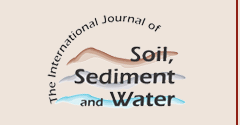Abstract
Biosparging enhances both aerobic biodegradation and volatilization, and is commonly applied to residual hydrocarbon source zone remediation. This technology was applied in pulsed mode to a known source of gasoline contamination in order to quantify the extent of remediation achieved in terms of both mass removed and reduction in mass discharge into groundwater. The gasoline source was created by injecting about 40 L of gasoline with 10% ethanol in small volumes from 24 injection points below the water table in 2004. The downgradient plume is still being monitored and the source area was cored in 2007. In 2008, a 3-point biosparge system was operated with an airtight cover to capture and monitor off-gases. Of the hydrocarbons in place, about 80% of pentane, 50% of hexane, but only about 4% of the aromatic hydrocarbons were volatilized and removed. CO2 and O2 monitoring in the off-gas confirmed limited biodegradation of hydrocarbons.
Recommended Citation
Lambert, Jennifer M.; Yang, Tianxiao; Thomson, Neil R.; and Barker, James F.
(2009)
"Pulsed Biosparging of a Residual Fuel Source Emplaced at CFB Borden,"
International Journal of Soil, Sediment and Water: Vol. 2:
Iss.
3, Article 6.
Available at:
https://scholarworks.umass.edu/intljssw/vol2/iss3/6
